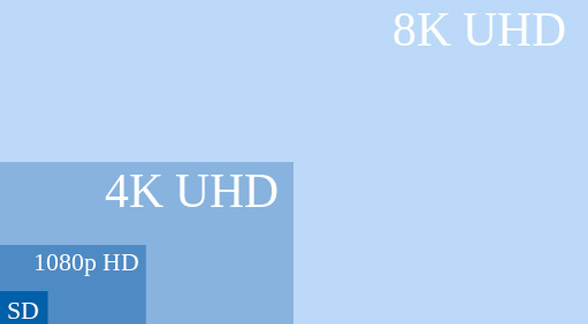Super High Resolution?
We all recognize that the audiophile marketplace is full of superlatives. What manufacturer wouldn’t want to claim the highest ground when it comes to their product? I get it and admit to pushing my agenda in a similar fashion. I’ve created this site and the Real HD-Audio logo to advance the cause of “real HD-Audio” because I’ve found too many companies offering music on disc or via downloads that are the same as the versions we acquired all those years ago on vinyl, tape, cassette and compact disc. Or they pretend a recording repackaged as a digital file of one type or another is magically transformed to HD status simply because it has those letters associated with it. Does anyone really think that HD-Radio at 64 or 92 kilobits per second is HD? The bandwidth of the typical MP3 file downloaded from the web is 128 kbps. It is if the folks at iBiquity (the company behind this sham) say that the HD stands for “Hybrid Digital”. How about a Super HD diet reduction potion? Please…!
So imagine my surprise when I bumped into an online video of a panel held in the fall of 2012 at the Rocky Mountain Audio Fest. The title card that comes on at the beginning of the video says “Super High Resolution: The New Download”. Maybe I’m the one’s that’s confused but we haven’t even figured out was “high resolution” audio is so how can we possibly start talking about “Super High Resolution”. The audio community needs to step back and apply some rational thinking to the way they explain and market their products.
We audio types deserve as much consideration as the video folks, don’t we? Their terminology and formats may not be perfect but they make a whole lot more sense than ours. The reason is because they’ve applied some specific standards to their definitions. The latest is the “Ultra HD” format, which is a step above HD not just because it has the word “ultra” in front of the letters but because they agreed that “Ultra HD” monitors will have a minimum of 3,840 × 2,160 pixels and an aspect ratio of at least 16:9. Here’s a graphic that I found at Wikipedia that shows the various formats very clearly.
Graphic showing the resolution of television formats.
May I propose that we start a discussion about a similar illustration that delineates different audio formats? I know there are lots of soft edges around specific analog formats that might make this difficult but it’s worth exploring. For example, the specifications of the typical 2.0 channel analog tape machine are fairly well established. But there are analog tape proponents that have souped-up machines that increase the fidelity of the tracks by using 1″ or even 2″ heads for stereo! These are highly specialized machines and represent the very bleeding edge of analog tape…but they aren’t part of the mainstream. Let’s stick with machines that were the standard for mixdowns and mastering transfers.
It is also important to know that the specifications of a particular format does not diminish its ability to deliver a wonderful, warm, musically pleasing presentation. My aim in suggesting some rigor in the way we categorize formats is to imbue them with some meaning relative to their “potential” for capturing and reproducing audio/music. The same situation exists with regards to video formats…it is entirely possible to see a segment of Ultra HD video that looks terrible.
Here’s a first pass at a “fidelity potential” illustration. This doesn’t account for any of the descriptive adjectives that frequently populate descriptions of formats.


